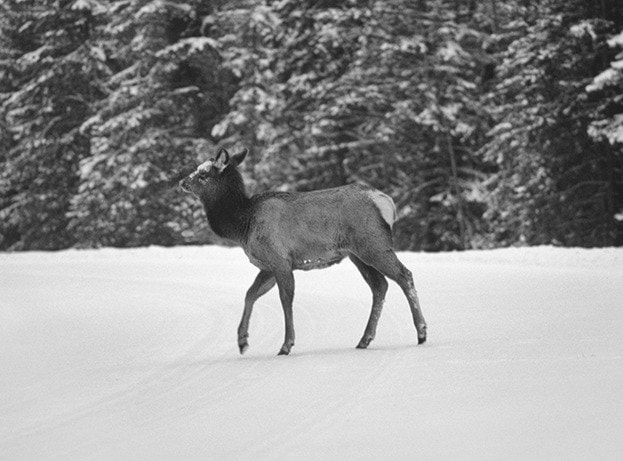Neil Helland previously spoke to the Omineca Express on the subject of wildlife collisions and their great frequency and danger this year. Helland has been trying to get the word out there about three different turnoffs in the Vanderhoof area each of which will now be getting updated signs from the Ministry of Transportation.
The main points of concern are the turnoffs from Highway 16 located at Seranovich Road, McCaul Road and Braeside Road. Signs will be added if there are none existing and their location will be tweaked.
Gayle Hesse is the chair of the regional wildlife working group which has members from ICBC, the Ministry of Transportation and a biologist from UNBC. She is also the coordinator for the Wildlife Collision Prevention Program.
"The intersection that Mr. Helland is concerned about, Seranovich Road and Highway 16, is an area where there are lots of deer and deer collisions," Hesse agreed. "When Neil Helland brought his concerns forward to me in December I brought the issue forward to our working group and the Ministry of Transportation has agreed to update the signs in the three locations in Vanderhoof."
"The difference from the old signs may be increased reflectivity and maybe a change in colour," said Hesse. "Now there are going to be four wildlife warning signs near Seranovich Road in addition to a large rectangular sign that introduces the concept of wildlife corridor sign."
The Ministry of Transportation itself only responded via email stating that deer and moose collisions are higher in the fall and winter months and that the ministry if constantly monitoring wildlife mortality on provincial highways.
Robert Adam, Ministry of Transportation sent the following in an email:
"The ministry takes the problem of wildlife encounters on B.C. roads very seriously and has a comprehensive program to mitigate wherever possible. B.C. has the largest inventory of species-specific wildlife warning signs in North America, with approximately 1,200 signs across B.C. Some of the signs are LED for added brightness and visibility. The ministry also carries out brushing programs along roadsides to reduce forage for animals and improve sightlines for drivers."
"Practically speaking there is not much more that the Ministry of Transportation can do unless they're going to rebuild the highway from scratch," said Hesse. "It's not practical to fence the highway in any of those locations either. It would be too expensive and there are too many side roads so there would have to be many gaps in the fence which would then render it useless. So if you can't manage the road, you have to manage the drivers."
Cam Hill, Conservation Officer for the Vanderhoof area, had a few tips for drivers that he'd like to get out there:
"Make sure you're looking really far down the road, don't get trapped in by your headlights. Also, scan the ditches, don't just look ahead. If you see headlights flicker ahead of you make sure to slow down and watch ahead for whatever just passed in front of them. If you see any wildlife at all make sure to slow down, don't just speed past because you can see it's only on the side of the road, there could be others and deer are not the most predictable of animals."
Both Hill and Hesse agree that a deer or moose culling initiative would be inappropriate for the current situation in Vanderhoof.
The only instance Hesse could think of where culling was absolutely needed in North America was in Alaska when they began to cull moose. But this was a situation in which hundreds of moose collisions were occurring in one winter season so they had to resort to extreme measures.
